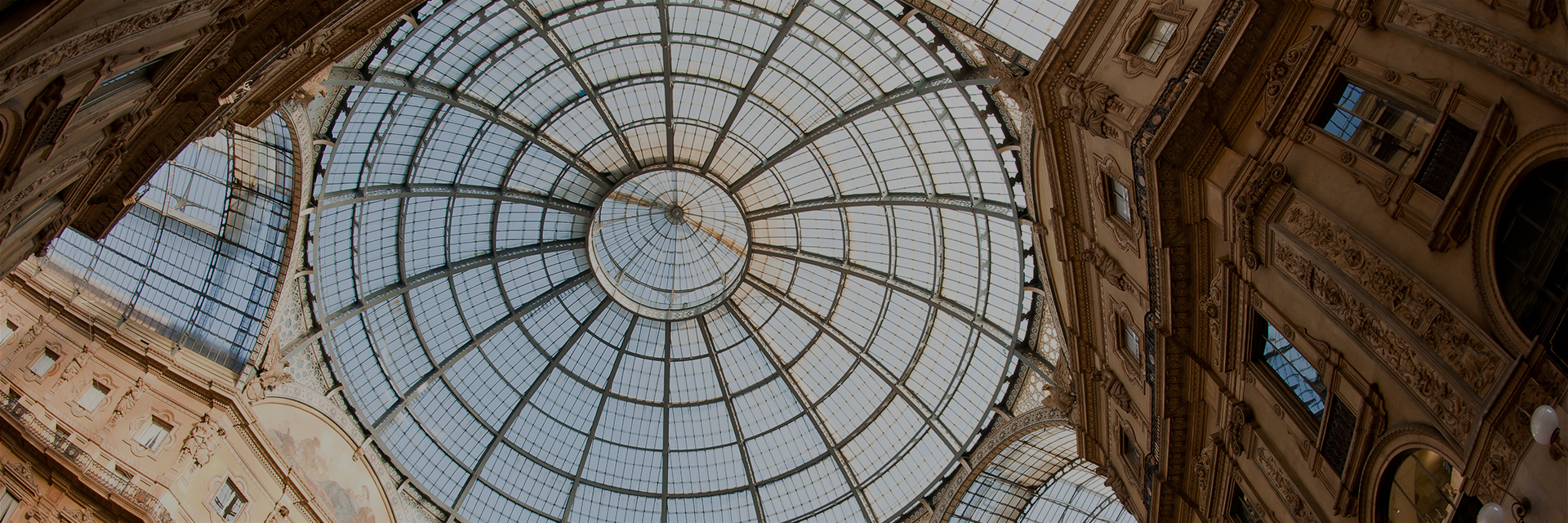(1)Industry:Big Data Summary: In 2020, the retail sales of furniture reached 159.8 billion yuan, the retail sales of building materials reached 174.9 billion yuan, the sales revenue of stores was 762.417 billion yuan, and the export volume was 403.86 billion yuan
Furniture retail sales: Recently, the State Council Information Office held a press conference and released relevant data on the growth of total retail sales of consumer goods in 2020. Data shows that in 2020, the total retail sales of consumer goods reached 391.981 trillion yuan, a decrease of 3.9% from the previous year. In 2020, the retail sales of furniture in China reached 159.8 billion yuan, a year-on-year decrease of 7%; Among them, furniture retail only maintained positive growth in May, October, and December of 2020. In May 2020, the retail sales of furniture products reached 13.4 billion yuan, a year-on-year increase of 3%, making it the month with the highest year-on-year growth in single month retail sales in 2020
Retail sales of building materials: In 2020, the retail sales of building and decoration materials in China were 174.9 billion yuan, a year-on-year decrease of 2.8%. In the single month retail sales of building materials in 2020, the retail sales in December were 22.7 billion yuan, which was the best month for year-on-year growth in 2020, with a year-on-year increase of 12.9%.
Sales revenue of home building materials stores:
According to the 2020 National Building Materials and Home Furnishings Prosperity Index (BHI), the cumulative sales revenue of large-scale building materials and home furnishings stores in 2020 was 762.417 billion yuan, a year-on-year decrease of 24.19%
Furniture export value: According to data released by the General Administration of Customs, the total export value of furniture and parts in China from January to December 2020 was 403.86 billion yuan, and the total export value of furniture and parts for the whole year of 2019 was 360.08 billion yuan. In 2020, the export value of furniture and parts in China increased significantly by 12.2% compared to 2019
Excluding furniture, textile exports from January to December amounted to 1069.55 billion yuan, a year-on-year increase of 30.4%; Lighting fixtures amounted to 260.2 billion yuan, a year-on-year increase of 14.6%; Ceramics amounted to 173.65 billion yuan, a year-on-year increase of 0.1%
Overall, in 2020, furniture in China; The retail sales of building materials have decreased compared to the previous year, but the scale of foreign trade has reached a historic high, ending 2020 with record breaking import and export data.
(2)Gaoding:Space and Space Designer Interprets What "Gaoding" is
Reporter: What do you think of "high-end home space customization" design? What are the differences between the design of Space and Space and other existing designs for whole house customization
Yu Longhai: First highest, high aesthetic value. Contemporary people have an increasingly high demand for aesthetics. In this era of "looking at the face", the home industry is no exception. The appearance of products is the top priority. Our products have six major element systems, and a rich element system has become the foundation of product appearance
Second highest, high quality. In addition to focusing on the high aesthetic value of products, consumers are also increasingly concerned about the quality of products. Quality is the core point in the product development process, and Space has taken numerous measures to ensure the quality of products. Compared with traditional whole house customized products, there are many improvements in product quality
Third highest, high premium. As for "Gaoding", whether it is a product or a brand, its positioning will be relatively higher. For the product, it needs to have its own unique differentiation compared to other brands in the same industry. Throughout the development of the entire product, the product design of Space and Space closely focuses on originality, which is the cornerstone of the high premium core
Fourth highest, high demand. As a "high-end customization" brand, the audience has a slightly higher level. Compared to other high-end customization brands in the market, Air and Space does not want to be a pyramid shaped group, but rather hopes to radiate more and a larger audience with guaranteed design and quality
Fifth highest, high service. Good products are difficult to implement without good service and design. High service not only refers to various services such as terminal after-sales, but also the implementation of design services. Space and Space provide many product elements in product design, hoping to cater to more design groups.
Reporter: What do you think are the main problems with the high-end design of whole house customization that already exists in the current market, and how do spaces and spaces solve these problems
Yu Longhai: "High customization" is a popular term nowadays, which also represents the attributes of a certain type of enterprise or product. Around 2016, the term "whole house customization" was widely used, and many big and small brands are calling it whole house customization, similar to "high customization" in 2020
As a "high-end" brand, how can we achieve differentiation? Firstly, there will be differences in product categories. Traditional whole house customized product design mostly starts from a single product thinking, while space and space cover whole house products, door products, wall panel products, and home delivery products. Different product categories also require designers to have higher requirements for comprehensive product design ability
Reporter: The product of Space and Space uses a large number of neutral and contrasting colors in color. What are the considerations for such color matching
Wu Kai: There are about 100000 colors that can be seen by the human eye, and the correct product color will play a decisive role in the entire sales system in the future. The Space and Space R&D team conducted research on the overall product design form and consumption trends from 2019 to 2020, made predictions that conform to the mainstream consumer group's lifestyle, discovered the design trend of neutral colors, and proposed diversified solutions for color, material, and surface treatment in the later stage, making it the color theme of Space and Space products. 80% of the colors are neutral, and 20% are personalized texture patterns, creating a rich visual aesthetic
Reporter: Does the design of "wall cabinet door integrated customization" put forward higher requirements for end designers?
Wu Kai: I will definitely put forward higher requirements. With the widespread acceptance of the concept of whole house customization by consumers, traditional cabinets and wardrobes, including customized storage, can no longer meet the needs of current consumers. In view of this, Space and Space propose the integrated customization of wall cabinet doors, which solves the problems of most home space solutions and customized storage. The integration of wall cabinets and doors requires a transformation from the original single category design of cabinets and wardrobes to a full category design, and the end designer also needs to shift from the original single category design to a full category design that includes cabinet and wardrobe wall products
Reporter: When it comes to high-end customization, is space design the core
Liao Ming: Space design is about creating a comfortable, pleasant, and IKEA atmosphere. Customization serves people from different social classes, and people have different habits, so their demand for customized products varies. How can personalized product customization gain consumer recognition? Firstly, a good experiential environment is needed to guide consumers to voluntarily enter the space and appreciate the product according to the situation. Attracting consumers through the "language" of the product itself, making them like it, understand it, identify with it, and purchase it, presenting these purchased products in a space they like, living in this environment they like, and achieving the goal of ultimate space and authentic life
Reporter: What aspects do consumers care most about when choosing high-end customization?
Liao Ming: The attributes of high-end customization cover all categories, aiming to create a comfortable atmosphere for home. Even a sofa, coffee table, or TV cabinet can make consumers feel the beauty and warmth of home. This lifestyle also includes a structural aspect: firstly, it is healthy and environmentally friendly; Secondly, it is safe; Thirdly, it is practical; Fourthly, it is interesting and diverse; Fifth, it is unified
Reporter: When it comes to high-end customization, the general feeling is that it is expensive. How do you view this issue? Additionally, how can high-end customization be done and distinguished from general customization
Liao Ming: Expensive, I've always thought it's good. Something that is not expensive is not necessarily bad, nor can it be good. In the customization industry, we usually think of expensive products such as international first-line brands like FENDI. Some people will go to buy them, but it is difficult for most people because they are expensive. However, there is still a possibility of buying one or two items. With insights into this trend and understanding of top international brands, we analyze the details of these international brands, visit their suppliers, obtain first-hand information, and then discuss and communicate these products and information, repeatedly refining and verifying them
With good products, good designs, and good materials, we also need good equipment and good processes to be implemented. We have always used fully imported fully automated equipment from Germany to create every ultimate detail, so that any product that leaves the factory can withstand the test of time.
(3)Extended reading:How do high-end brands stand out
1. Anchoring effect:
Home building materials are low attention high-value products, and most consumers do not pay much attention to them. Even homeowners who have undergone secondary decoration often need to refer to factors such as price, brand, and configuration when browsing exhibition halls, watching live broadcasts, and discussing plans. Among many reference standards, these three factors are the most intuitive and easy to understand
Home designers are no exception. When promoting high-end products and brands, they often consider three factors - whether they are imported or not? Is it a work by a well-known designer? And is it a high-end brand
For example, the high prices of imported boards and hardware often make consumers think they are more reasonable; Compared to ordinary designers, having the endorsement of well-known designers makes the price more reasonable; If consumers choose high-end brands, they feel more proud when talking to family and friends
These three elements can strike a balance between impressing consumers and generating revenue, while the transparent pricing system of mass market brands cannot showcase high-end products or provide designers with negotiation and operational space.
2. Consumer segmentation:
Some high-end home furnishing brands have continued to develop steadily over the past six years, which is in line with the trend of consumer segmentation
In the past decade's home terminal promotion war, manufacturers have become polarized, with most brands involved in price wars, and only a few high-end brands sticking to their own brand tone, rarely or even not participating in such low price and low discount activities. Over time, they have firmly established a brand image of high quality and good price in the eyes of designers and consumers
Consumers have also shown obvious "differentiation". Since the outbreak of the epidemic, high-end consumption has not been greatly affected, and some consumers who have purchasing power but have previously purchased mid to low end products have begun to return to high-quality and affordable consumption. The consumption of mid to low end products that pursue cost-effectiveness constitutes another extreme
3. Brand productization:
Through comparison, it can be found that high-end brands have widened the gap with mass market brands in terms of appearance, configuration, and craftsmanship details, making high-value consumer groups feel scarce and value for money.
For example, many custom home furnishing brands have been trapped in the price war of terminal packages over the past decade, constantly reducing material selection, configuration, and after-sales service. However, J brand has continuously optimized material selection, increased configuration, and continuously improved after-sales service quality in the past five years. Over the years, even inexperienced consumers can easily discover the relationship between price and value in the comparison of quality, configuration, and other aspects
The trend of brand productization is becoming increasingly evident, which is why home products made in Germany and Japan have always received special treatment and pursuit. In short, the product strength is strong
4. Design centric theory:
The vast majority of home products are semi-finished products. Ceramic tiles need to undergo layout design and installation before final delivery can be completed. Customized home furnishings need to be designed and installed based on the characteristics of the layout and the preferences of the owners. Finished furniture needs to be matched with the overall soft and hard decoration of the walls and floors, and the layout and display of the space, in order to reflect the beauty of the furniture and space
Therefore, the design of sample rooms, renderings, and floor plans has always been an important reference factor for home product selection, and is of paramount importance for high-end products
In previous long-term research on high-end brand terminal stores and discussions with home decoration designers, the author found that W brand's terminal stores always prioritize professional high-end customization services, using standardized and high-level pre-sales, sales, and after-sales services to make consumers feel that the brand is the top brand in the industry in terms of solution design, product delivery, and after-sales service.
MSince its establishment, the brand and T brand have always collaborated with well-known interior designers at home and abroad, such as Dai Kun, Liang Zhitian, Liang Jianguo, Ju Bin, etc., using the personal brand endorsement of well-known designers to attract and retain a group of elite consumer groups
Prediction of the future direction of the high-end market
Consumers' ultimate experience needs for high-end products in terms of matching, style, craftsmanship details, and other aspects determine that consumers are more inclined to recognize people, products, works, and plans, as well as the culture and symbolism behind them
From this perspective, high-end products are difficult to replicate, and those that can be standardized and replicated are not considered high-end products. High end designers are not easy to cultivate, and there are almost no companies or institutions that can achieve mass production of high-end designers
1. Masterpiece
In the past three years, from X ceramic tile brand's "Design Empowering Big Brand" to J brand's "My Home, Masterpieces", and M brand's double beam series design, all have used design masterpieces to connect consumers. Masterpieces are the golden signboard to attract and retain consumers, and the most powerful weapon to build trust and bring manufacturers and customers closer together.
In the future, brand productization, product differentiation, and popular products and designs will become increasingly abundant, but masterpieces will always be scarce and more easily respected and recognized
2. Specialization
Specialization in skills and expertise in style. When communicating, discussing, and analyzing designers' works, I found that designers also have preferences and expertise. Some designers have a deeper understanding of the new Chinese style, some have a special preference for Italian light luxury, and some like a mix of Chinese and Western styles
Manufacturers and upstream and downstream of the supply chain are no exception. Some specialize in the research and development, design, and processing of certain solid wood veneers, while others have unique insights into color matching, classic design elements, and are more competitive in production, manufacturing, and product delivery
Due to differences in style, material selection, and processing techniques, high-end products are becoming increasingly specialized, and different high-end home furnishing brands will also tend towards specialization and segmentation
3. Intelligence
Science and technology change life. Intelligence is an important trend in the future development of home appliances. In the past three years, Y brand Internet appliances have been developing rapidly at a growth rate five times higher than the average growth rate of the industry. One important reason is that it can realize the interconnection of intelligent switches and smart appliances.
High end products are often the "first crab eaters" of new technologies and applications in the industry: M brand wall panels with embedded LED light strips, W brand fingerprint password pumps, J brand sensor faucets, and so on
In addition, some high-end brands even consider whole house intelligence as their future development strategy
According to data reported by Forward Industry Research Institute and others, the main markets for smart homes in China are high-end markets such as villas, villas (retail, engineering), and smart communities (engineering). The fastest growing markets are smart hotels (engineering) and smart offices (engineering). Currently, home automation generally costs over 100000 yuan, or over 1000 yuan per square meter
4. Summary
Behind the independence of high-end home furnishing products from mid to high end home furnishing brands and their emergence as a prominent niche market, there is a significant differentiation in the consumption power of some consumers, a huge change in the social consumption structure, and a concrete manifestation of the upgrading and iteration of the consumption values, aesthetic habits, and consumption orientation of high-value consumer groups
Consumer segmentation is becoming increasingly apparent. On the one hand, high-quality and high priced products are increasingly recognized by middle and low-income groups. On the other hand, the consumption growth of high-quality and high priced home products is strong. Many home manufacturers tend to attract consumers of high-quality and high priced products. Although there are more products on the market, more and more consumers are willing to pay higher prices for high-end products, and they believe that the value of high-end home products will be higher.





